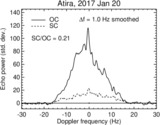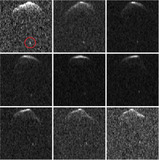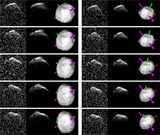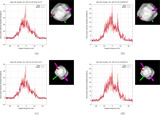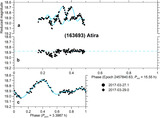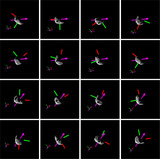Image Details
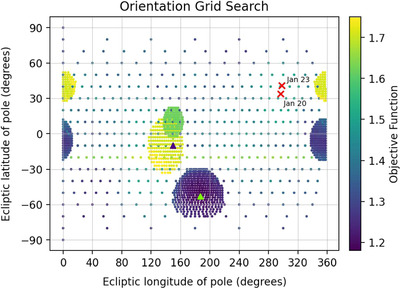
Caption: Figure 4.
Results of a coarse, 10° increment pole search across the entire celestial sphere with finer, 3° increment grid searches conducted near local minima (seen as the several large groupings) using ellipsoidal models. Each data point represents a model with a specific ecliptic latitude and ecliptic longitude, and the color of the data point represents the value of the objective function (see Section 3 for details), where a darker color means a better fit. The green triangle is the orientation of the best-fitting, ∼5 km model, and the purple triangle is the orientation of the alternate, ∼7 km model. Note that the group of models near longitude 0°, latitude −10° are darker in color; however, these models were ruled out based on being too small in size, ∼4 km equivalent diameter, to match delay-Doppler observations. The red crosses are the line of sight to Atira during radar observations and are annotated with their corresponding observed date.
Copyright and Terms & Conditions
© 2024. The Author(s). Published by the American Astronomical Society.


